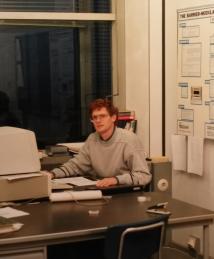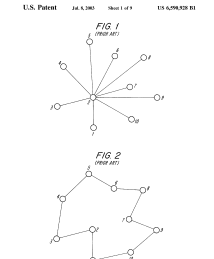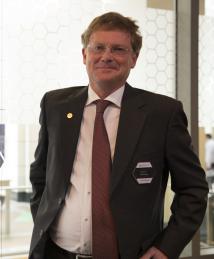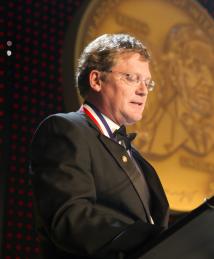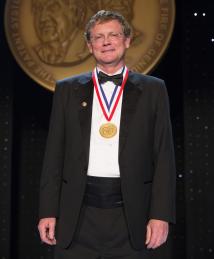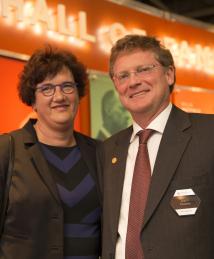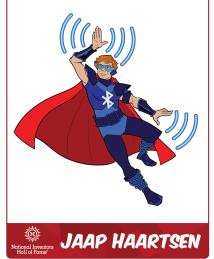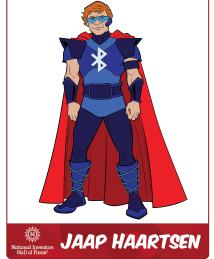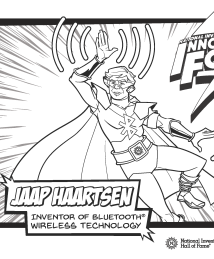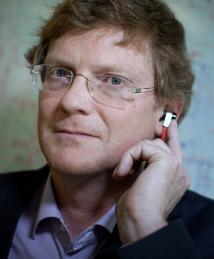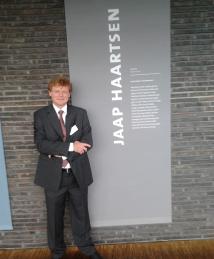Jaap C. Haartsen
"It starts with imagination, where you have no boundaries."
Jaap Haartsen led the invention of Bluetooth® wireless technology. Used worldwide, Bluetooth allows a seemingly endless array of devices to wirelessly connect and communicate over short distances.
Haartsen was born in The Hague, Netherlands, in 1963. He studied electrical engineering at the Delft University of Technology in Delft, Netherlands, earning his master’s degree in 1986 and his doctorate in 1990.
In an interview with the National Inventors Hall of Fame®, Haartsen described his journey toward invention. “It starts with imagination, where you have no boundaries. It started with an interest in electronic components and how they work together,” he explained. “I had small boards where you could fit in small transistors and diodes and resistors, and I made small circuits out of it, just out of curiosity. For me to learn how these things worked, it was very fascinating.”
In 1991, Haartsen joined Ericsson in the U.S., taking a position in the research department of advanced cellular phone systems. He then moved to the company’s mobile phone division in Lund, Sweden, in 1993, working on indoor wireless communication systems. He was tasked with finding a solution for short-range radio connections that would add functionality to mobile phones and enable new sales. In 1994, he began formulating the system that would later be known as Bluetooth, making possible wireless connections between various types of electronic devices.
Initially, Bluetooth was simply intended to be a more convenient alternative for wired voice calls, but with its continuous evolution, Bluetooth wireless connectivity grew from about 11 yards in its first generation to 262 yards in its fifth. This technology allows people to wirelessly connect devices that many use daily, including smartphones, laptops, headphones, keyboards, portable speakers and computer microphones. It has transformed the ways in which technology can be used to work, learn, communicate and access entertainment, often making everyday tasks easier. “To be honest, I did not have any idea of how big Bluetooth could become,” Haartsen said.
In 1998, Haartsen played a key role in the creation of the Bluetooth Special Interest Group (Bluetooth SIG), which manages the development of Bluetooth standards and the licensing of Bluetooth technologies and trademarks. He served as chairman of the Bluetooth SIG air protocol specifications group from 1998 to 2000, driving the standardization of the Bluetooth radio interface and working to obtain worldwide regulatory approval for Bluetooth technology.
He later became CTO of Tonalite BV, a consumer electronics company that developed and manufactured wearable wireless products. Plantronics acquired Tonalite in 2012, and Haartsen continued as an expert on wireless systems and technologies at the company. He also served on the faculty of the University of Twente in Enschede, Netherlands, where he taught mobile radio communications systems. Today, he is CTO and chief scientist at Dopple, a privately owned maker of hearing protection products in Assen, Netherlands.
For his trailblazing work in modern technology, Haartsen’s honors and awards include induction into the Consumer Technology Hall of Fame in 2016 and the Lifetime Achievement Lovie Award, presented by the European arm of the International Academy of Digital Arts and Sciences in 2022.
To stay inspired as he continues to innovate, Haartsen maintains a balance in his life. “I try to have a balance between my personal life, where I have very little technology, and my professional life, which is full of technology,” he explained.
Haartsen also promotes creativity and collaboration among the next generation of innovators. He actively supports National Inventors Hall of Fame education programs including Camp Invention®, combining play and learning to help children build an innovative mindset through hands-on STEM exploration. “Play is very important for inventing,” Haartsen said. “Playing is part of broadening your knowledge, because while you’re playing, you learn.”
